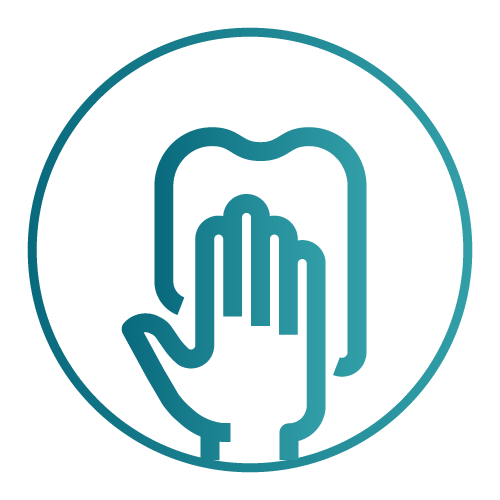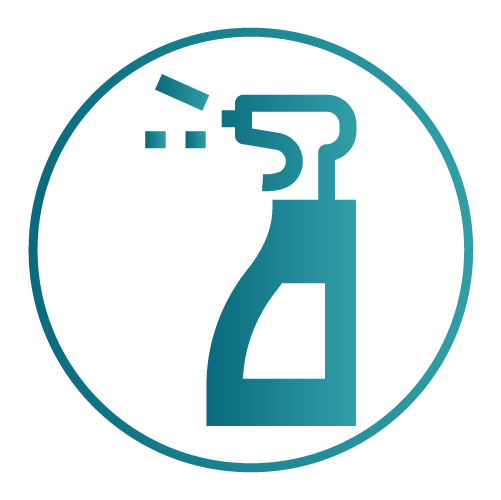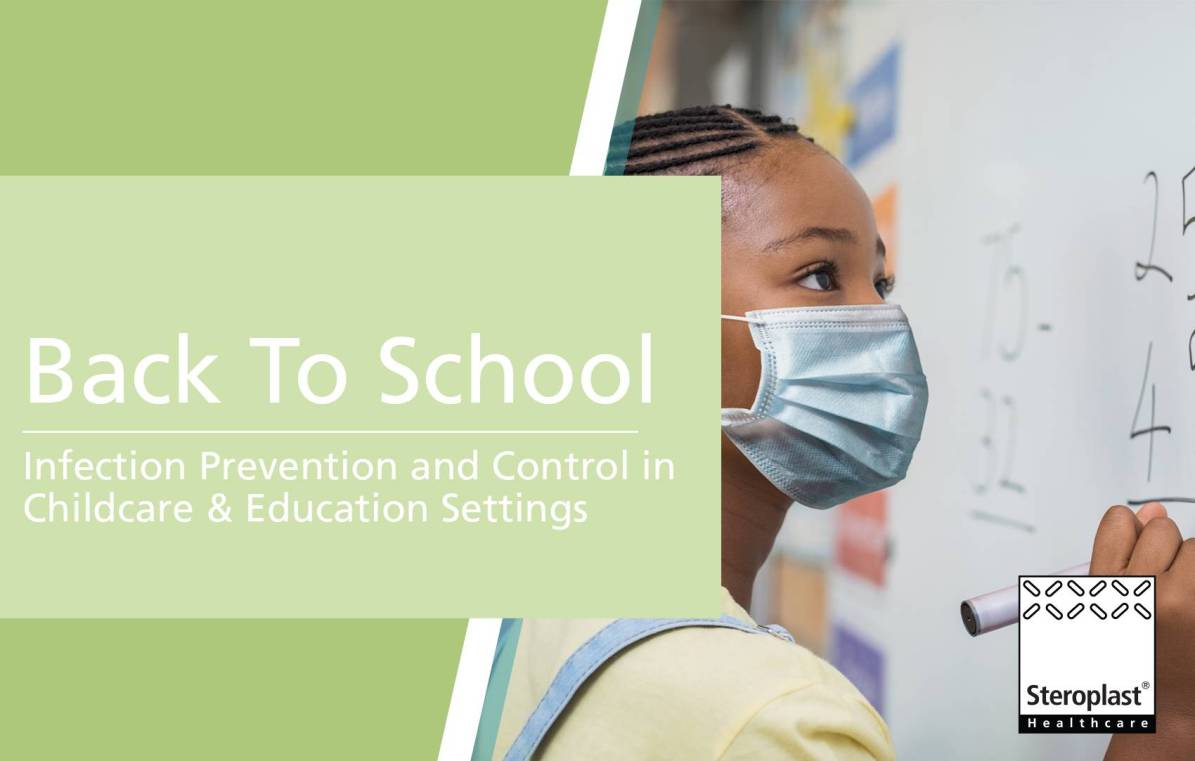Back to school: Infection prevention and control in childcare & education settings
UK Prime Minister Boris Johnson announced the roadmap out of lockdown on Monday 22nd February 2021. The roadmap included 4 steps, with the goal that all restrictions will be lifted on June 21st 2021 at the earliest, which is dependent on the success of the vaccine rollout.
Step 1 of the plan included that all pupils will return to school from Monday 8th March 2021, this is welcome news for many students who have not attended school physically since the UK was put into lockdown on January 5th.
Some parents, staff and pupils have expressed their uncertainty around students returning to school after a recent survey of over 7,000 teachers found that 42% felt unsafe, while 19% felt very unsafe. However, if a risk assessment is conducted in every childcare setting, and if infection control measures are implemented, this should help minimise concerns.

Maintaining a clean and hygienic environment in schools
Cleaning surfaces and equipment in schools and childcare environments is highly important, especially in settings such as nurseries or early years or primary schools, as young children can be quite messy, and it can be difficult to reduce contact between them. Products such as Milton steriliser can be useful in childcare settings, at it has been designed to sterilise baby and child items in just 15 minutes.
When it comes to toys, soft toys and toys with intricate parts that can be hard to clean shouldn’t be used. Also, dummies or teething rings should be clearly labelled for each child and if they fall on the floor, they should be washed and disinfected before the child puts them back in their mouth.
To properly clean and disinfect surfaces and childcare/school equipment you can use wipes and disinfectant at the end of the day, or immediately if an area or object is visibly soiled. To thoroughly disinfect surfaces or equipment, you should follow this simple three-step process:

1. Remove organic materials such as dirt with wipes or a biohazard kit

2. Thoroughly clean the surface with soap, rinse and then dry

3. Apply disinfectant and allow it to sit for the required contact time. Rinse with a damp cloth and dry
Choose the right wipes to disinfect surfaces at school
There will always be a risk of infection in schools. But choosing effective infection control products is one of the best ways to keep harmful germs to a minimum.
Using pre-dosed wipes like PDI Sani-Cloth® AF disinfectant wipes (formerly known as PDI Sani-Cloth Universal Wipes) significantly cuts down on cleaning times and makes it easy to spot clean throughout the day wherever you need to. Use the wipes on non-porous surfaces to cut through bacteria, viruses, fungi, and TB.
Our Sani-Cloth® AF Wipes are also alcohol-free making them ideal for use in environments where children will be exposed. There’s nothing in our universal wipes that could be harmful to breathe in or make skin contact with.

Wearing face masks in schools and childcare settings
Ahead of pupils returning to school on the 8th March, there has been guidance on wearing face masks in schools and childcare settings, with face masks that have 3 layers being recommended. The World Health Organisation advises that children aged 12 and over should wear a face covering under the same conditions as adults, especially when social distancing cannot be maintained. The table below shows when a face mask should be worn and by who, according to the guidance as of the 4th March 2021.
Situation | Settings | Who should wear a mask? |
If social distancing cannot be maintained (indoors or outdoors) | Nurseries Primary schools | Staff members |
Secondary schools | Staff members Pupils | |
Lunch and snack times | Nurseries Primary schools Secondary schools | A face mask is not required except for when dinner staff are around the students e.g when helping an early year’s child to cut up their food |
Dedicated school transport | Secondary schools | All pupils in year 7 and above
|
Visitors to school (including parents or carers when dropping off and picking up their children) | Nurseries Primary schools Secondary schools | All visitors should wear a face mask
|
Sporting activities and PE lessons | Nurseries Primary schools Secondary schools | A face mask is not required |
There may be some people – children or staff members – that are unable to wear a face mask due to health, age or a disability reason. These people shouldn’t be routinely asked to provide evidence that they can’t wear a face mask and may feel more comfortable if they have a badge, card or sign to let others know that they can’t wear a mask.
Waste bags should be easily accessible to students and staff members so that they can dispose of face masks without the risk of cross-contamination. They shouldn’t be placed in a recycling bin or dropped as litter. It must be communicated to pupils what they should do with their masks when they want to dispose of them.

The importance of hand hygiene in schools and childcare settings
The most basic thing to start with when it comes to infection prevention and control in schools and childcare settings is good hand hygiene. As we have been in the midst of the pandemic for almost a year now, you are probably aware that you should wash your hands for 20 seconds with soap and water or hand sanitiser. The Centers for Disease Control and Prevention recommend using a hand sanitiser with at least 60% alcohol in it.
Staff members and pupils will perform various activities throughout the school day. The table below demonstrates when a staff member and pupil/child should wash their hands based on the different activities they might perform.
Activity | Staff member | Pupil/ child |
Before starting and finishing the day | ✓ | ✓ |
Before handling, preparing or serving food | ✓ |
|
Before eating food | ✓ | ✓ |
Before using a keyboard and mouse | ✓ | ✓ |
After handling soiled clothing or anything that might be contaminated | ✓ |
|
After coming into contact with bodily fluids e.g changing a nappy | ✓ |
|
After helping a child use the toilet or potty | ✓ |
|
After blowing or wiping your nose (or a child’s nose) | ✓ | ✓ |
After any cleaning procedure | ✓ |
|
After outdoor activities such as PE or break times | ✓ | ✓ |
After removing protective gloves | ✓ |
|
Both staff members and the children must know how to thoroughly clean their hands. You can do this by placing guidance posters in the toilets and staff rooms, with staff members who work with early years supervising children whilst washing their hands to make sure they are doing it properly. Creating a song or a poem that lasts 20 seconds could help young children wash their hands thoroughly.

To allow students to continue their education at school, infection control measures must be implemented in school and childcare settings so that they can continue to stay open. It is the responsibility of teachers, parents, and students to keep themselves and others safe.
Make sure you are prepared for this, with our infection control and PPE products, including Type IIR face masks, gloves, wipes and 70% alcohol hand sanitiser.
For more information check out our page dedicated to infection control in schools.
For more information on our infection control and PPE products, call us on 0161 902 3030 or email us at enquiries@steroplast.co.uk. Alternatively, you can fill out the form below and one of our experts will be back in touch shortly:
